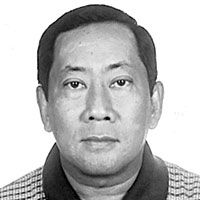Japan: A very disabled-friendly nation!

HIROSHIMA: By the time this article appears, I will be on a Shinkansen “bullet train” bound for the city of Hiroshima. My sister Adela Kono suggested this because she knows that I’m a student of World War II history. This would only be a day trip (a distance similar to Cebu-Manila) to the historic place Hiroshima where on Aug. 6, 1945 the first atomic bomb named “Fat Boy” was dropped, largely responsible for the end of World War II. I would certainly be writing about this visit for our Monday column.
For most of the week, we were in the resort town of Hakone, where we saw up close Mt. Fuji (incidentally, only the Americans call it Fujiyama), which the Japanese fondly call Fuji-san. Going to Hakone was a short two-hour train ride by the smooth Odakyu Line. Japanese railways are no doubt the best run in the whole world. Japan’s domestic economy is fueled by an ultra-efficient rail system. Mt. Fuji was picture-perfect without her foggy veil. We took the cable car to Okwadani and down to Lake Ashinoko.
Talking about Japanese railways, this Sunday, the original model of the bullet train called the “O” Series that was first inaugurated in 1964 at the Tokaido-Shinkansen Line connecting Tokyo, Nagoya, Kyoto and Osaka will be retired. This original bullet-nosed train (from where it got its name bullet train) operated 10 times a day between Shin-Osaka and Hakata in Fukuoka on the Sanyo-Shinkansen Line. Hundreds of rail enthusiasts are expected to be on the Tokyo station’s platform to take photos of this historic train and its equally historic retirement.
Japan is retiring its old bullet train, which originally ran at the high speed of 200 kilometers per hour, because they are now using the next two generations of the Shinkansen trains that are now hitting speeds of up to 300 kilometers per hour. That’s about the same speed as the lumbering old DC-3 that we used to fly from Cebu to Manila. What’s remarkable about the Shinkansen bullet trains is that since their introduction 44 years ago in 1964, there has never been a single death attributed to a train accident or mishap, except a murder inside a train a long time ago.
Those bullet trains are always on time, as it is the Japanese culture, from which they drive their economy. Just imagine that in one year, the combined delays of all the bullet trains running on all the railways of Japan were only 12 seconds! They are a major contribution to the Japanese domestic economy and a source of pride by the Japanese. I gathered that by next year, bullet trains would have Wi-Fi connection!
Now just in case you are thinking “What if the Japanese government just ‘donate’ their old trains to the Philippines?” First of all, there’s no chance in that as the Japanese railways are privately owned. But so that you’ll know, what makes the bullet trains run extremely fast is not just a big engine, it is a complete system that includes a well-designed railway track that can handle high-speed trains. If you put a Shinkansen train on our battered railways, I doubt if it can even hit 50 kilometers per hour! So stop dreaming and if you want to ride in the world’s best railway system, then you have to visit Japan, even if that’s an expensive proposition!
One major lesson I learned from this trip to Japan is that their establishments are all disabled-friendly. Since my sister Adela Kono had polio when she was still two years old, she either uses her crutches or her wheelchair. Back home in the Philippines, she’d really have a hard time getting from place to place, even if Cebu City has been awarded as the most disabled-friendly city, while SM is the most disabled-friendly shopping mall.
But in Japan, thanks to their being courteous, people on wheelchairs get special attention all the time! Ramps are everywhere for the disabled and toddlers in strollers to use. They have special elevators for disabled people and yes, even in Narita, we saw the first disabled-friendly escalator, which would stop to pick up a wheelchair. On the train station, officials are always ready to help push your wheelchair toward the elevator that brings you to the platform. On top of that, disabled people get hefty discounts, not only on the train, but also on taxis as well. You can say that it’s great to be disabled in Japan and with their median population at around 60 years old, seeing people using wheelchairs has become commonplace.
Incidentally I learned that a week ago on Nov. 20, Cebu Pacific inaugurated its first Japan service, launching the Manila-Osaka from the Ninoy Aquino International Airport (NAIA) Terminal 3. This adds more flights from the Philippines to Japan and hopefully, it would include a direct flight from Cebu to Japan and back. With Cebu Pacific’s P3,999 one-way fare to Osaka, this is definitely a bargain, as it would afford Filipinos a chance to visit Japan, with the extra money reserved for hotel rooms and food.
* * *
For e-mail responses to this article, write to [email protected]. Bobit Avila’s columns can also be accessed through www.philstar.com. He also hosts a weekly talkshow, “Straight from the Sky,” shown every Monday, 8 p.m., only in Metro Cebu on Channel 15 of SkyCable.
- Latest
- Trending






























